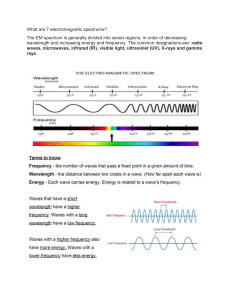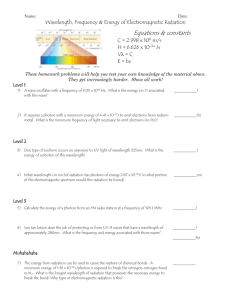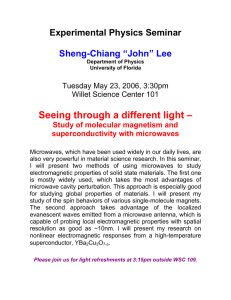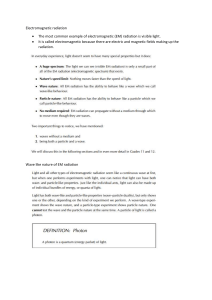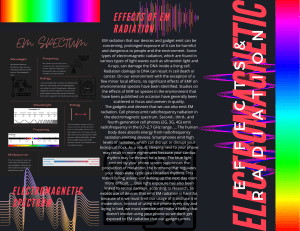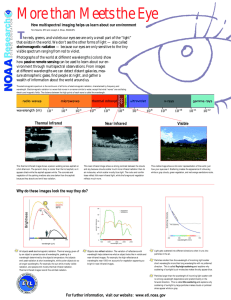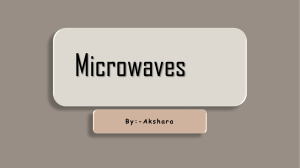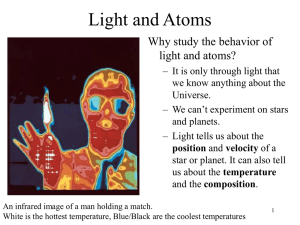Light and the Electromagnetic Spectrum What is light?
advertisement
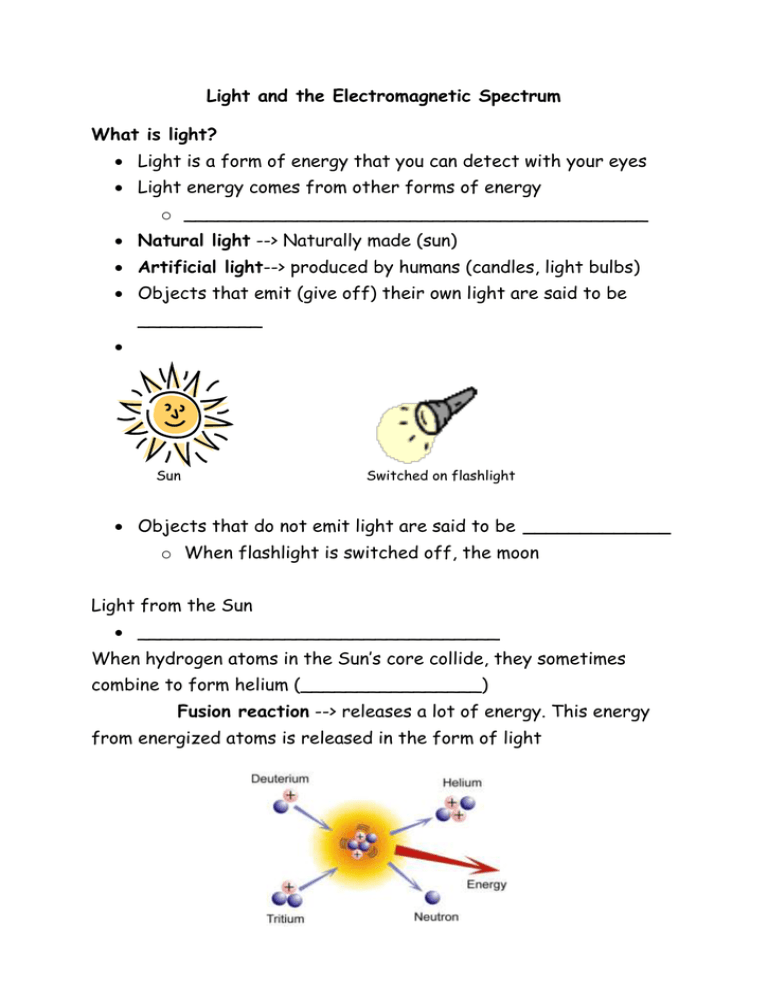
Light and the Electromagnetic Spectrum What is light? Light is a form of energy that you can detect with your eyes Light energy comes from other forms of energy o _________________________________________ Natural light --> Naturally made (sun) Artificial light--> produced by humans (candles, light bulbs) Objects that emit (give off) their own light are said to be ___________ Sun Switched on flashlight Objects that do not emit light are said to be _____________ o When flashlight is switched off, the moon Light from the Sun ________________________________ When hydrogen atoms in the Sun’s core collide, they sometimes combine to form helium (________________) Fusion reaction --> releases a lot of energy. This energy from energized atoms is released in the form of light Properties of Light _______________________________________________ _________________ Light travels so fast ~ 7.5 times around the equator in 1s Light travels at a speed of ________________ but has different wavelengths Electromagnetic Spectrum – is a diagram that illustrates the range of electromagnetic waves, in order of frequency The visible colours of light are just different wavelengths of light White light splits up into visible colours (ROYGBV) Violet has the shortest wavelength of visible light We cannot see UV radiation from the sun but we still get sun burnt We use microwaves to cook food Radio waves carry signals to our tvs/radios X-rays produce images of internal organs Type of Radiation Radio Microwaves Infrared Visible light Frequency, energy level and wavelength (high/low, short/long) Provide 2 examples Explanation Energy from radio stations/tvs emit into the air from your ipod and turn into your favourite song They will cook your popcorn! Our skin emits infrared light. This is why we can be seen in the dark by vision goggles Theis is the part our eyes can see UV Sun is the major source X-Rays Your doctor uses them to look at your bones Gamma Rays Radioactive and nuclear plants Learning Check: The following diagrams represent six types of electromagnetic radiation. Match the diagram with the following names: radio, x-rays, red light, microwave, violet light, ultraviolet wavelength
